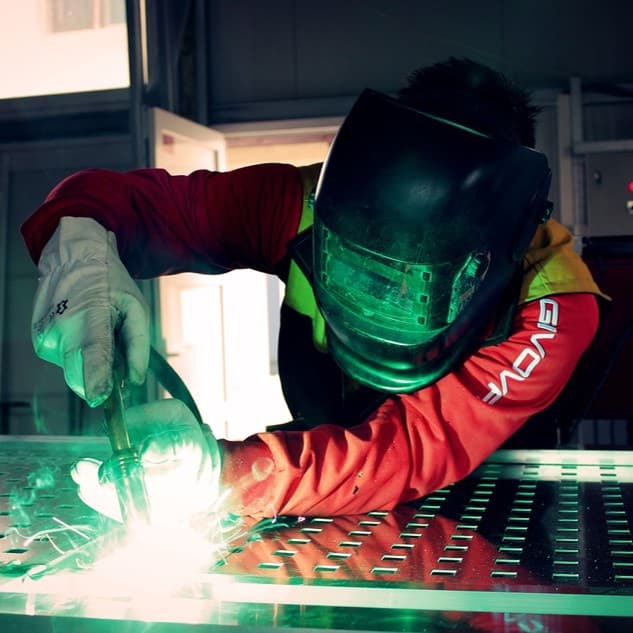The Importance of Health and Safety in the UK
We investigate the importance of health and safety practises in the United Kingdom. emphasising the importance of legislation and regulations in ensuring worker safety and well-being. This article will also highlight the ongoing commitment to safeguarding the health and safety of individuals in the UK by examining historical milestones, current challenges, and future prospects.
Early Beginnings: Industrial Revolution and Workers’ Rights
The Industrial Revolution was a watershed moment in British history, ushering the country into an era of rapid industrialization and urbanisation. However, these advancements were accompanied by harsh working conditions and widespread labour exploitation. Recognising the need for change, the Factory Acts were enacted between 1802 and 1833 to address hazardous working conditions.
These Acts aimed to regulate factory operations, limit working hours, and protect vulnerable groups from exploitation, such as women and children. The Factory Acts were critical in establishing better workplace standards and laying the groundwork for subsequent labour legislation.
Impact of the Factory Acts (1802–1833)
The Factory Acts, enacted between 1802 and 1833 in the United Kingdom, had a significant impact on workers’ rights and workplace safety during the early stages of the Industrial Revolution. These Acts imposed various regulations on factory owners, such as restrictions on the employment of children, work-hour limitations, and provisions for basic sanitary conditions.
The Factory Acts played an important role in protecting workers and laying the groundwork for improved labour conditions by limiting excessive working hours and addressing the exploitation of vulnerable groups such as children.
Emergence of Trade Unions and their role in worker protection
Workers faced mounting challenges as the Industrial Revolution progressed and sought collective action to improve their circumstances. This resulted in the formation of trade unions, which represented the collective voice of workers in various industries. Trade unions were instrumental in advocating for worker protection, fair wages, and better working conditions.
Trade unions fought for better worker rights, including enhanced safety measures, and to address the power imbalance between employees and employers through strikes, negotiations, and lobbying. The formation of trade unions was a watershed moment in the ongoing struggle for workers’ rights, ensuring that their voices were heard in shaping labour laws and policies. Trade unions continue to play an important role in protecting worker interests and advancing workplace safety and well-being today.
Formation of Health and Safety Legislation
We will look at the historical context and key milestones that led to the establishment of vital regulations and laws aimed at protecting workers’ well-being in the sections that follow. Understanding the origins of health and safety legislation allows us to gain insight into the evolution of worker protection and the UK’s ongoing commitment to ensuring safe and healthy workplaces.
The Factories Act 1833
The Factories Act of 1833 was a watershed moment in British history, introducing critical regulations to improve factory workers’ working conditions. This historic legislation addressed issues such as child labour by establishing a minimum working age and limiting children’s working hours.
It also required adequate ventilation, cleanliness, and proper sanitary facilities within factories, putting workers’ health and well-being first.
The Mines Act 1842
The Mines Act of 1842 was a critical step towards protecting the health and safety of miners in the United Kingdom. This law addressed the hazardous working conditions endured by miners, particularly children. It prohibited women and girls from working underground and imposed age restrictions on boys who worked underground.
These measures were designed to reduce the risks associated with mining operations and protect vulnerable workers from hazardous environments.
The Workmen’s Compensation Act 1897
The Workmen’s Compensation Act of 1897 established a framework for compensating workers injured in the course of their employment, which was a significant milestone in the UK’s health and safety legislation. This act recognised workers’ rights to financial compensation for workplace injuries and illnesses, ensuring that they have adequate support in the event of an accident or a health-related setback. The Act laid the groundwork for future legislation to protect workers’ well-being and ensure they are adequately compensated for the hazards of their jobs.
The Influence of World Wars and the Post-War Era
Understanding the significance of the World Wars and the postwar period in the United Kingdom We learn how these historic events shaped the country’s health and safety landscape, including the implications for worker protection, the emergence of new legislation, and the overall evolution of safety practises. We provide insights into the enduring legacy of the World Wars on health and safety in the UK by examining the historical context and its aftermath.
Effects of World War I on Health and Safety Practises
World War I had a significant impact on health and safety practises in the United Kingdom. Workers were exposed to numerous hazards during the war, which raised awareness of the importance of safety precautions. The experience of dealing with injuries and illnesses on the battlefield prompted a shift in workplace safety attitudes. As a result, there has been a greater emphasis on protective equipment, safety training, and improved medical care for workers.
The Factory Act 1937 and its significance
The Factory Act of 1937 was a watershed moment in the UK’s health and safety landscape. This legislation expanded on previous factory acts by introducing comprehensive worker protection regulations. It addressed a variety of workplace safety issues, such as fire prevention, machinery guarding, and welfare facilities. The Factory Act of 1937 was critical in formalising safety standards and reinforcing employers’ responsibility to provide a safe working environment for their employees.
Health and Safety during World War II
The unique challenges posed by the war shaped health and safety considerations during WWII. As the country prepared for war, industries shifted their focus to supporting the war effort, resulting in increased workplace risks. To mitigate these risks and protect workers, strict safety measures were put in place.
Evacuation plans, air raid shelters, and precautions against accidents and industrial diseases became critical. The war effort also resulted in advances in safety equipment and practises, which had a long-term impact on post-war health and safety regulations.
Modernization and Consolidation of Health and Safety Legislation
We try to understand how the United Kingdom’s health and safety legislation is being modernised and consolidated. It also looks at how the Health and Safety at Work Act of 1974 paved the way for a comprehensive framework, which led to the formation of the Health and Safety Executive (HSE). The UK has strengthened its commitment to protecting workers’ well-being and creating safer workplaces by consolidating various regulations and streamlining enforcement.
The Health and Safety at Work Act 1974
The Health and Safety at Work Act 1974 is a landmark piece of legislation in the United Kingdom, establishing a commitment to worker safety and laying the groundwork for comprehensive health and safety regulations. This act established a legal framework that held employers accountable for health and safety, requiring them to ensure the well-being of their employees and others affected by their activities.
It emphasised risk assessment, training, and the implementation of necessary safety measures in the workplace to prevent accidents and illnesses.
Establishment of the Health and Safety Executive (HSE)
The Health and Safety Executive (HSE) was established as a non-departmental public body responsible for enforcing health and safety regulations in the UK following the Health and Safety at Work Act 1974. The HSE is responsible for overseeing and promoting safe working practises in a variety of industries. Its duties include advising, inspecting, investigating accidents, and taking appropriate enforcement action to ensure compliance with health and safety standards.
Role of the HSE in enforcing regulations
The Health and Safety Executive (HSE) protects worker safety by enforcing health and safety regulations throughout the United Kingdom. The HSE plays a critical role in reducing workplace accidents, injuries, and illnesses through a combination of proactive measures and reactive responses to incidents. It conducts inspections and audits, provides advice and guidance, and, when necessary, takes enforcement actions to hold employers accountable for maintaining safe working environments.
The HSE protects workers’ well-being and contributes to a safer and healthier nation by promoting a culture of compliance and continuous improvement.
Evolution of Health and Safety Regulations in the UK
These significant milestones in health and safety legislation demonstrate the United Kingdom’s commitment to evolving regulations that prioritise worker safety and ensure a safer working environment. These regulations have played an important role in shaping and improving workplace practises across various industries by addressing various aspects of occupational health and safety.
Key Milestones in Health and Safety Legislation
The Management of Health and Safety at Work Regulations 1999 were a watershed moment in UK health and safety law. These regulations imposed a legal obligation on employers to assess and manage workplace risks, ensuring employee safety and well-being. They emphasised the importance of risk assessment, preventive measures, and providing workers with information and training, all of which contribute to a safer working environment.
The Control of Substances Hazardous to Health Regulations 2002
The Control of Substances Hazardous to Health Regulations 2002 (COSHH) were designed to protect workers from hazardous substance exposure. Employers were required to assess and control the risks associated with hazardous substances through measures such as substitution, engineering controls, and the use of personal protective equipment (PPE). COSHH was critical in raising awareness about the potential health risks posed by workplace substances and ensuring adequate precautions were taken to minimise harm.
The Construction (Design and Management) Regulations 2015
The Construction (Design and Management) Regulations 2015 (CDM) established a comprehensive framework for managing construction industry health and safety. The importance of collaboration, coordination, and communication among all parties involved in construction projects was emphasised by these regulations.
CDM imposed obligations on clients, designers, contractors, and workers to address health and safety issues proactively throughout the project lifecycle, resulting in improved risk management and enhanced protection for construction workers.
Health and Safety in Construction (Sector-Specific)
Specific regulations and initiatives have been implemented in the construction industry to address the sector’s unique risks and challenges. The 2007 Construction (Design and Management) Regulations were a major step forward in improving health and safety practises in construction projects.
These regulations emphasise the importance of effective project planning, coordination, and collaboration among all parties involved in a construction project, putting designers, contractors, and clients in charge of ensuring health and safety throughout the project lifecycle. The Construction (Design and Management) Regulations 2015 added to these regulations by streamlining processes and promoting a more proactive and integrated approach to managing health and safety in construction.
The 2007 and 2015 Construction (Design and Management) Regulations were critical in raising awareness and improving health and safety standards in the construction industry. These regulations have helped to reduce accidents and create safer work environments for construction workers across the UK by emphasising cooperation, risk management, and accountability.
Health and Safety in Manufacturing (Sector-Specific)
The Control of Substances Hazardous to Health (COSHH) Regulations 2002 and the Provision and Use of Work Equipment (PUWER) Regulations 1998, which ensure worker safety when handling hazardous substances and using machinery, will be highlighted. We also highlight the role of technology in improving health and safety practises in the manufacturing industry.
The Control of Substances Hazardous to Health Regulations 2002
The Control of Substances Hazardous to Health (COSHH) Regulations 2002 play an important role in ensuring worker safety and well-being in the manufacturing industry. Employers are required by these regulations to assess and control the risks associated with hazardous substances used in manufacturing processes.
The COSHH Regulations aim to prevent exposure to hazardous substances, reduce health risks, and protect the workforce by implementing measures such as proper storage, handling, and protective equipment.
The Provision and Use of Work Equipment Regulations 1998
The Provision and Use of Work Equipment (PUWER) Regulations 1998 address another important aspect of manufacturing health and safety. These regulations establish standards for the safe provision and use of work equipment, which includes machinery, tools, and appliances used in manufacturing operations. PUWER requires that equipment be fit for its intended purpose, be inspected and maintained on a regular basis, and that operators receive adequate training and information.
Manufacturers can reduce the risks associated with machinery and ensure the safety of their workforce by adhering to these regulations.
The Role of Technology in Advancing Health and Safety
Technology has had a transformative impact on the advancement of health and safety practises in the manufacturing sector. Automated systems, robotics, and machine learning algorithms have all contributed to increased workplace safety. For example, automated systems can perform hazardous tasks, lowering the risk of human injury. Furthermore, sensors and data analytics enable real-time monitoring of environmental factors, detection of potential hazards, and proactive intervention.
Manufacturers can improve safety standards, reduce accidents, and create safer working environments for their employees by embracing technological advancements.
Where can I Find Quality Health and Safety Training?
Here at Learn Q we have a number of training programmes designed to help you keep your self, your colleagues, your customers and your business safe.
If you buy 10 or more courses from Learn Q, you will also qualify for our bulk buy discounts.
Or save even more with our money saving bundles such as:
- First Aid and Fire Safety Training Package | £17.51 | includes Emergency First Aid at Work and Fire Safety
- First Aid, COSHH and Fire Safety Bundle | £26.24 | includes Emergency First Aid at Work, COSHH Awareness and Fire Safety
- Health and Safety 5 Course Bundle | £40 | includes Fire Safety, Health and Safety at Work, Display Screen Equipment (DSE) Awareness, Slips, Trips and Falls and RIDDOR (Reporting of Injuries, Diseases and Dangerous Occurrences Regulations) Awareness courses
- Health and Safety at Work 7 Course Training Package | £61.25 | includes Fire Safety, Health and Safety at Work, Display Screen Equipment (DSE) Awareness, Emergency First Aid at Work, COSHH Awareness, Manual Handling and Mental Health: Workplace courses
- Health and Safety in Business Training Package | £33.74 | includes Emergency First Aid at Work, COSHH Awareness, Health and Safety at Work and Fire Safety courses
- Health and Safety in Catering Training Package | £34.99 | includes Emergency First Aid at Work, COSHH Awareness, HACCP Awareness and Fire Safety courses












